Microsoft has significantly diversified the approaches to data conversion with ease, in Office software. We have already seen how to extract export text to Word from PowerPoint slides, and now we’re back with another article to show you the way to convert your PowerPoint presentation into pictures. This would be a beneficial option for you when you’re facing issues in running Slide Show under PowerPoint. In that case, you can order the converted images into a sequence and project these images using full-screen mode.

Now the question might be coming to your mind, how do you convert slides into images? Well, there is an easy way to do this as mentioned in the below steps. You can also control at what resolution your slides should be saved as images. Thus by saving the high-quality images, you can use any device which supports the playing of pictures as a slide show to play your presentation.
Convert & save PowerPoint Presentation Slides as High Resolutions Images
1. Open any presentation in PowerPoint of your choice which you’d like to save as images. Click FILE.
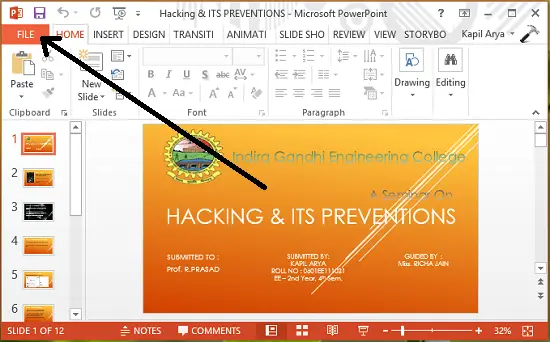
2. Next, in the following screen, click Save as.
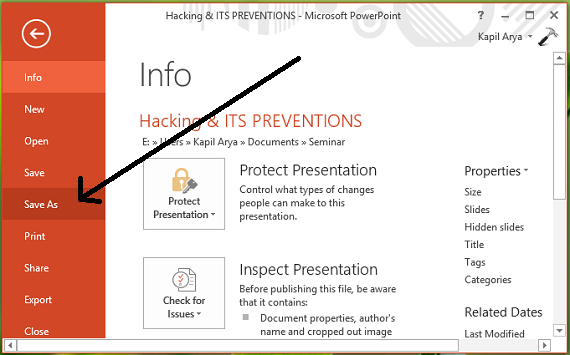
3. Now comes the tricky part! When you got the Save as window, make sure to use the Save as type as PNG, JPG, GIF or TIFF format. All of these are image format, as a tip, I suggest you select PNG format, since the good quality of images can be expected with it. Click Save finally.
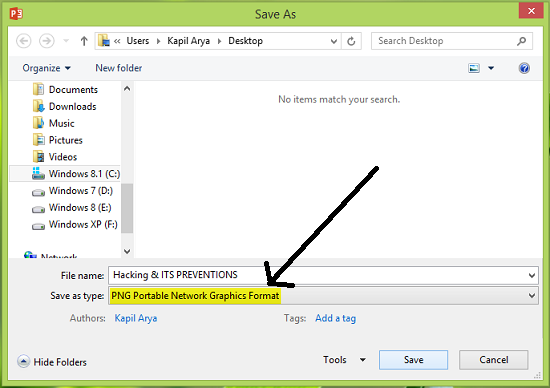
Since we have to save the entire presentation in form of images, select All Slides in the following prompt:

PowerPoint may now get busy in conversion and it will notify you when it is done with it:

In this way, all of your presentation slides are exported to separate images inside a new folder. Now let us see, how you control the resolution of these exported images so far.
Change Export Resolution Of PowerPoint Slides
According to Microsoft Support, there is an easy way, using which you can configure at what resolution the slides should be exported to the image. You can use the following steps to make such a configuration:
1. Press Windows Key + R combination, type put Regedt32.exe in Run dialog box and hit Enter to open the Registry Editor.
2. Navigate here:
HKEY_CURRENT_USER\Software\Microsoft\Office\15.0\PowerPoint\Options
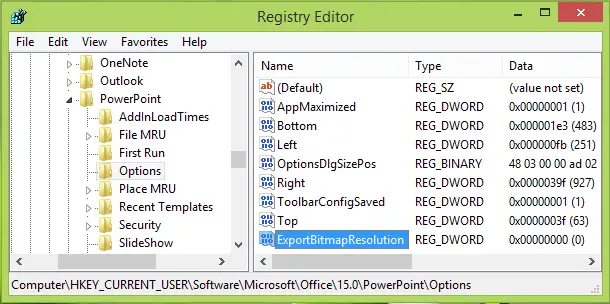
3. In the right pane, right-click in blank space and select New -> DWORD Value. Name the newly created DWORD as ExportBitmapResolution. Double click on same DWORD to modify its Value data:
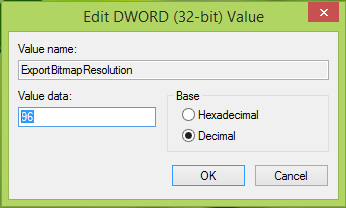
4. In the above-shown box, you have to first select Decimal base. Input 96 as the Value data which scales the exported images at 1280 x 720 pixel resolutions. You can reference the following values to get the desired image size:
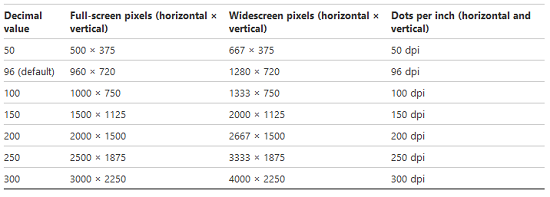
Click OK after inputting your desired Value data. Close the Registry Editor and reboot the machine to get changes effective.
How do I convert a PowerPoint to a high-resolution JPEG?
To convert a PowerPoint presentation or slide to a high-resolution JPEG image, you can make use of the in-built option. To get started, click on the File menu and select the Save As option. Next, expand the Save as type drop-down list and choose the JPEG File Interchange Format option. Finally, name your file, select a path where you want to save the file, and click the Save button.
How do I save a PowerPoint as a 1080p picture?
To save a PowerPoint slide as a 1080p picture or high-resolution image, you need to go through the aforementioned steps. First, open the PowerPoint presentation and click on the File menu. Next, select the Save As option and choose the PNG JPG option from the Save as type drop-down menu. Then, choose a location where you want to save the file and click the Save button.
Trust you find the article useful!
yeahhh, Nice Article very Working…
^^ Glad you find it useful :)
Good grief, Microsoft! I first learned this trick about 10 years ago, and you’re still forcing users into this hopeless workaround rather than making this choice available through PowerPoint preferences. When will you focus on fixing the things in Office which are broken and frustrating rather than adding layers of spurious functionality that very few people really need?
Wow… This is pretty sad. You would think that someone at Microsoft would go “Maybe people would like an EASY way to export slides as 1920×1080 to fit those HD Televisions” Not everyone wants to take the time to hack a registry to do something that should be as simple as entering two numbers in a dialog box.
Playing around with Office 2010. A value of 192 for a widescreen presentation gives you exactly 1920×1080 for Full HD.
Thank you! This worked beautifully!
^^ Glad it help! :)
Worked fine for me for Office 2003 SP3 :)
Thx a lot
It didnot work in office 2010 student version at win7 home basic. the jpeg resolution is 78dpi both after and before registry modification.
The idiocy of this is that dpi is not a valid measure in this kind of activity. DPI is relative measure that should only be used in print. Anything that appears on-screen should be measured in absolute dimensions…that is the pixel resolution of the image.
I am stuck in the Registry Edito, at “Power Point”, there is no “Option” option to choose….
Thanks. Regedt32.exe = regedit in my windows 8.
I agree that this function should be standard in Powerpoint options. I do not use it for saving slides as image to present but to create nice images, logo’s, badges etc. I crop them afterwards in another tool. Powerpoint does have very nice features to build.
get all the way to options and there’s no Exportbitmapresolution or anything of the sort. using office 2010 pro
The one place where Mac:Office 2011 beats Windows. There’s an option to save a slide deck as pictures, and you can select the pixel width and height before clicking OK.
This! Thank you for this article. Shame on Microsoft for making this so difficult.
I found the folder under
HKEY_CURRENT_USERSoftwareMicrosoftOffice14.0PowerPointOptions
but no setting for the export resolution :(
This was the same for me… What a lame program
thanks for this…very helpful and effective
Well said!
This no longer works with Office 2016 but it’s even better/easier now because you can do it directly in the Options/Advanced Settings for PowerPoint by selecting from a drop/down menu.
Please look at this link below :)
https://support.microsoft.com/en-us/kb/827745
In Office 2013, 144 outputs full HD.
Set 144 (in Office 2013) to get full HD. Play with the numbers: if 100 = 1333px width, then 144 would be 1919.52 (which is rounded to 1920).
HKEY_CURRENT_USERSoftwareMicrosoftOffice16.0PowerPointOptions. It works fine O365, key must be made by myself.
Sadly they don’t have enough power users to force these changes. Most people who buy office products will never export a slide.
I know this is old but WHY are you messing with the registry? Just click on the “Tools” option to the left of the Save Button then Select “Compress Images…” and you get a Dialog Box with the options to change the resolution of the images. I’m pretty sure this has been around for EVER though my only recent experience is with 2010 and 2016/365. PP 2010 allowed up to 220 PPI, PP 2016/365 allows up to the original image resolution (High Fidelity) including 330 PPI which is basically HD.
Also to point out the number controls PIXELS Per Inch NOT Dots Per Inch The first measures the resolution of the printed image the second the resolution of the image on the screen.
“Compress Images…” affects the saved size of bitmap images within the presentation, and is used to optimize filesize of the PPT/X. It does not affect the size of exported bitmap images of entire slides/presentations, which is what this article covers.
No matter what Microsoft thinks (regarding below discussion), but this article is very helpful! Thanks!!!
Just what I was looking for. Thanks!!
It is really helpful. I changed Decimal Value to 600. I got very high quality Image from Power Point. Thank you for sharing this valuable information.
I know this is old, but this is exactly what I needed to know. By the way for those interested, the MAC version of office has this setting native and easy to click on in the program itself…. Way to go Microsoft, your apple designers figured this was necessary while your primary PC designers didn’t?!?!